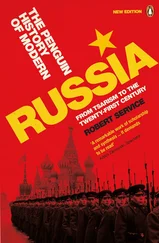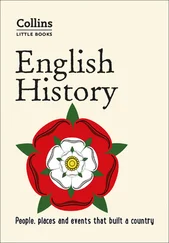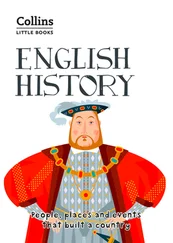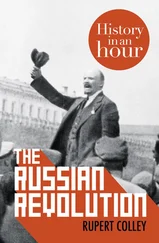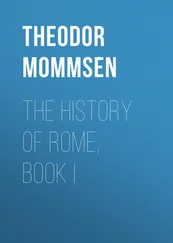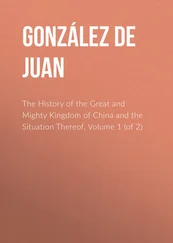1 Cover
2 Maps Maps Figure 1.4 Early Spanish exploration. Figure 2.1 Frontier Institutions in Texas. Figure 2.4 Indian Tribes of Colonial Texas. Figure 3.2 Empresario Contracts. Figure 3.5 Ethnic Settlements, 1836. Figure 3.7 The Battle of San Jacinto. Figure 4.1 The Republic of Texas and boundary claims. Figure 4.3 Towns of the Republic of Texas, 1836–1845. Figure 5.1 Land Forms of Texas. Figure 5.2 Ethnic settlements, 1850. Figure 5.4 Military Posts. Figure 6.9 West Texas forts and the Comanche Range, 1866 to 1880s. Figure 6.13 Cattle Trails. Figure 7.3 Major Texas Railroads to 1900. Figure 8.3 Ethnic settlements 1880. Figure 9.1 Oil fields of Texas and date of discovery 1894–1918. Figure 9.17 “Wet and dry” counties of Texas 1911. Figure 13.8 The Ogallala Aquifer, as Part of the High Plains Aquifer System. Figure 14.4 Texas counties. Figure 14.10 Texas today.
3 Preface and Acknowledgments
4 About the Companion Website
5 1 Contact of Civilizations, 1521–1721 The Diversity of New World Cultures The Indians of Texas The Iberian Legacy Los Reyes Católicos Looking for Fortunes in Texas Readings
6 2 Spaniards in a Far Northern Frontera , 1721–1821 Frontier Institutions Frontier Society Indian Accommodation and Resistance The Bourbon Reforms Texas Toward the End of the Spanish Era Independence from Spain Resilience Readings
7 3 Mexican Texas, 1821–1836 Immigration Empresario Contracts The Native Mexicans of Texas Anglos and the Mexican Government Mexican and American Capitalists The Law of April 6, 1830, Resisted Liberals in Power The Ineffectiveness of the Law of April 6, 1830 Multicultural Society The Centralists Back in Power, 1834–1836 The War for Texas Independence Readings
8 4 Launching a Nation, 1836–1848 Republicanism The Politics of Caution The Politics of Action Retrenchment Demographic Growth The Texians Cultural Regions Women in the Republic of Texas Religion The Rise of Towns Learning and Plain Folks Transportation Recognition in Europe Friction with Mexico Annexation The War with Mexico End of the Lone Star Republic Readings
9 5 Statehood, Secession, and Civil War, 1848–1865 The Texas Economy at Midcentury Texas Society at Midcentury Texas Politics at Midcentury Texas and the Civil War Readings
10 6 The Era of Reconstruction, 1865–1876 Aftermath of the War Congressional Reconstruction The Davis Administration and Radical Reconstruction Black Texans During Reconstruction A Perilous Place in Which to Live The Indian Displacement The Rise of the Cattle Kingdom “Redemption” The Constitution of 1876 Readings
11 7 A Frontier Society in Transition, 1876–1886 The Texas Population The Closing of the Open Range Sheep and Goats Violence and Lawlessness The Return of the Texas Rangers The Railroads and Economic Development Public Land Lumber and Other Industries Minerals The Growth of South Texas Labor Unions Cities in the Late Nineteenth Century Plain Living Agriculture Education and Other Public Services Politics The Legacy of the Frontier Readings
12 8 Texas in the Age of Agrarian Discontent, 1886–1900 Economic Change Ethnic Groups in the Late Nineteenth Century Women in Late‐Nineteenth‐Century Texas Agrarian Organizations Texas Politics, 1886–1900 Populism Texas at Century’s End Readings
13 9 Texas in the Progressive Era, 1900–1929 Oil Urban Growth and Workers Labor Unions Agriculture and Rural Life Ethnic Texans Texas Politics in the New Century Women in Action Prohibition in Texas Texas after World War I Readings
14 10 Texas and the Great Depression, 1929–1941 Texans Confront the Depression State Politics, 1929–1933 The Return of “Fergusonism,” 1933–1935 The New Deal and Taxes Minorities During the Great Depression State Politics, 1935–1938 National Politics, 1935–1938 State Politics, 1938–1944: The End of the New Deal Literature and the Arts Prior to World War II Readings
15 11 War, Prosperity, and Modernization, 1941–1960 Texas and World War II Postwar Politics Texas Industrialization Texas Workers and Urban Growth Labor Unions Texas Farms The Texas Family Texas Schools Texas Society and Culture at Midcentury Readings
16 12 Texas in Transition, 1960–1986 The Decade of Johnson and Connally Challenges to the White Male Elite for Control of Texas The Civil Rights Crusade Sharpstown and the End of an Era The Texas Economy Toward a Two‐Party State? Leisure and the Arts Readings
17 13 A New Texas? 1986–2001 The Texas Population in Transition The Oil Bust and Its Aftermath Rural Texas in Crisis Religion in Texas: A Force for Tradition Texas Culture in the Late Twentieth Century Texans at Play: Sports and Leisure The Paradox of Texas Politics Historic Assumptions in Transition Conclusion Readings
18 14 Into the New Millennium, 2001–2018 A Changing Population The Modern Texas Economy The Changing Face of Urban Texas Texas Politics in the Twenty‐First Century Current Issues, Future Challenges Conclusion Readings
19 AppendixSpanish Governors of Texas Provincial Governors of Texas Governors of Coahuila y Texas Presidents of Texas Governors of Texas United States Senators
20 Index
21 End User License Agreement
1 Chapter 5Table 5.1 Origins of the Texas population, 1850.
2 Chapter 6Table 6.1 Phases of Reconstruction.
3 Chapter 7Table 7.1 Makeup of the Texas population.Table 7.2 Dollar value of Texas crops.
4 Chapter 9Table 9.1 Ranking of Texas crops by acreage, 1909–1929.
1 Chapter 1 Figure 1.1 White Shaman. Cave art of the prehistoric inhabitants of the Peco... Figure 1.2 Over 1,200 years ago, a group of Caddo Indians known as the Hasin... Figure 1.3 This famous panther is an outstanding example of the prehistoric ... Figure 1.4 Early Spanish exploration. Figure 1.5 Coronado on the High Plains by Frederic Remington. Figure 1.6 Mission San José, San Antonio.
2 Chapter 2 Figure 2.1 Frontier institutions in Texas. Figure 2.2 The pobladores turned to the environment for materials with which... Figure 2.3 The funeral of an “angel” or baptized infant. Infant mortality ra... Figure 2.4 Indian tribes of Colonial Texas. Figure 2.5 Buffalo Hump, Comanche Indian. Figure 2.6 The marketplace was the center of life in frontier towns. Figure 2.7 Corrida de la Sandía (Watermelon Race) by Theodore Gentilz. ...
3 Chapter 3 Figure 3.1 Stephen F. Austin. CN 01436, The Dolph Briscoe Center for America... Figure 3.2 Empresario contracts. Figure 3.3 José Antonio Navarro. Painting by Dee Hernández. University of Te... Figure 3.4 Lorenzo de Zavala. University of Texas at San Antonio Libraries S... Figure 3.5 Ethnic settlements, 1836. Terry G. Jordan, “A Century and a Half ... Figure 3.6 Dawn at the Alamo . This romantic painting is exhibited at the Tex... Figure 3.7 The Battle of San Jacinto.
4 Chapter 4 Figure 4.1 The Republic of Texas and boundary claims. Figure 4.2 Mirabeau Buonaparte Lamar. Figure 4.3 Towns of the Republic of Texas, 1836–1845. Figure 4.4 Six o’ clock a.m., Military Plaza, San Antonio. Figure 4.5 Shooting of the 17 decimated Texians at El Salada, Mexico . Figure 4.6 The Republic of Texas is no more–President Anson Jones conducts t ...Figure 4.7 William A. “Big Foot” Wallace in San Antonio.
5 Chapter 5Figure 5.1 Land forms of Texas.Figure 5.2 Ethnic settlements, 1850.Figure 5.3 Leñeros, Tejano wood haulers with their donkeys.Figure 5.4 Military posts.Figure 5.5 Batting cotton. Frontier women were responsible for every step of...Figure 5.6 Sam Houston in the latter years of the 1850s. Elected governor in...Figure 5.7 The Confederates evacuating Brownsville, Texas. Sketched by an En...Figure 5.8 Union soldiers on Elizabeth Street in Brownsville. Drawing from a...Figure 5.9 Albert Sidney Johnston. From a painting by E.F. Andrews. Exhibite...
Читать дальше

